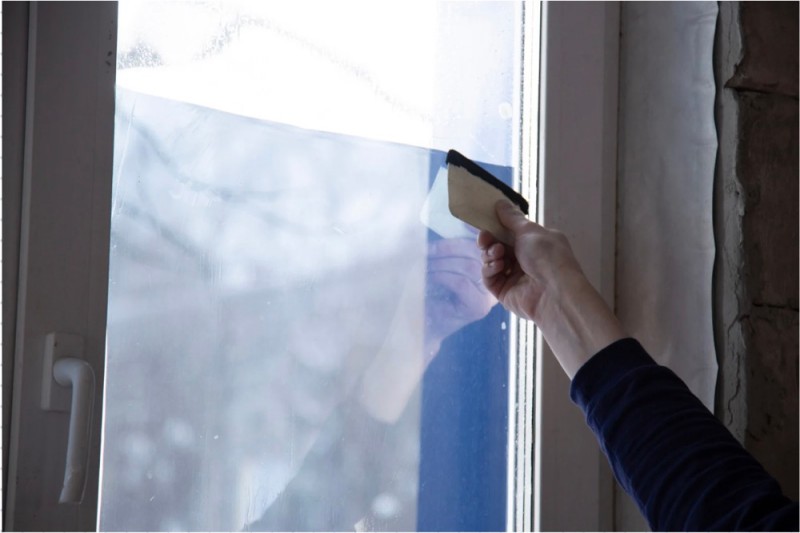Building Reflective Heat Insulation Coating and Energy Efficiency
What is Building Reflective Heat Insulation Coating?
So, you’re probably wondering, what in the world is this fancy term – Building reflective heat insulation coating? Well, my friend, it’s like sunscreen for your building! Just as you slather on SPF to prevent sunburns at the beach, this magical coating reflects sunlight away from your home or office. It’s designed to keep those pesky heat rays outside where they belong and maintain a cooler indoor environment.

Now, imagine walking into a room that feels like a cool breeze on a hot summer day instead of an oven. Sounds dreamy, right? This is the kind of magic we’re talking about! But wait, there’s more!
The Characteristics of Building Reflective Heat Insulation Coating
Okay, let’s break down some characteristics of our star player here. First off, it’s energy-efficient! Who doesn’t want lower energy bills? By reflecting heat away from your building and reducing the need for air conditioning, you’ll be saving money while also being an eco-warrior. High five!
Secondly, it’s durable. Just like that pair of jeans you’ve had since high school (we all have one), this coating can withstand the test of time and weather conditions without fading or peeling.
And let’s not forget about aesthetics! You can choose various colors and finishes to ensure your building looks fabulous while staying cool. Because who says practicality can’t be stylish?
How Does Building Reflective Heat Insulation Coating Work?
Alright folks, here comes the science part (don’t worry; I’ll keep it light). This coating works by using special pigments that reflect infrared radiation – basically those sneaky heat rays we talked about earlier.
When sunlight hits your building's surface coated with this magic potion, instead of soaking in like a sponge (yikes!), most of it gets bounced back into the atmosphere. It’s like having a personal bodyguard against heat waves! So next time someone asks how it works, just nod knowingly and say it's all about those reflective pigments!
Benefits of Using Building Reflective Heat Insulation Coating
Let me hit you with some benefits because who doesn’t love a good list?
- Energy Savings: As mentioned before, lower cooling costs are always welcome!
- Comfort: Say goodbye to hot spots in your home or office.
- Environmentally Friendly: Less energy consumption means less strain on our planet.
- Longevity: A good coat lasts longer than that last-minute gift you bought at the gas station.
- Increased Property Value: Potential buyers will swoon over energy-efficient features!
- UV Protection: Protect your interiors from fading due to harmful UV rays.
- Versatility: Suitable for various surfaces - roofs, walls; you name it!
So tell me—who wouldn’t want these benefits?
Application Process for Building Reflective Heat Insulation Coating
Now let’s talk about how you get this amazing stuff onto your building because DIY isn’t just for Pinterest enthusiasts anymore! First things first—prep work is essential! Clean the surface thoroughly; no one wants dirt ruining their new look! Then apply a primer if needed (consult with professionals if unsure).
Once prepped up and ready to go, use either spray or roller application methods depending on what suits best for your space. Don’t forget to allow adequate drying time between coats – patience is key here folks! And voila—you now have a beautiful protective layer keeping your space cool as cucumber on a summer day!
Common Misconceptions About Building Reflective Heat Insulation Coating
Ahh misconceptions—the bane of every great product's existence! Let’s clear up some myths:
- Myth 1: It only works in hot climates—False! It helps maintain temperature control year-round!
- Myth 2: It makes buildings look weird—Not true! There are tons of stylish options available.
- Myth 3: Only roofs need reflective coatings—Nope! Walls benefit too!
So remember folks—don’t believe everything you hear until you've done some research yourself!
The Industry Perspective on Building Reflective Heat Insulation Coating
From the viewpoint of a Construction Project Manager, building reflective heat insulation coating is gaining traction as a crucial component in modern construction practices. With sustainability becoming a buzzword in the industry, material selection plays a pivotal role in achieving energy savings and minimizing environmental impact. By opting for reflective coatings, project managers can enhance energy efficiency significantly. Not only do these coatings reduce reliance on HVAC systems, but they also contribute to LEED certification points—a big win for any construction project aiming for green credentials. Moreover, as far as I know, the long-term benefits of reduced energy consumption lead to financial savings that can be reinvested into future projects. The industry is moving towards innovative solutions like these coatings that align with global sustainability goals.
Building Reflective Heat Insulation Coating and Energy Efficiency in Construction
| Coating Type | Thermal Reflectivity (%) | Application Method |
|---|---|---|
| Water-Based Coating | 85 | Spray, Roll, Brush |
| Solvent-Based Coating | 90 | Spray, Roll |
| Elastomeric Coating | 80 | Spray, Roll |
| Reflective Roof Coating | 95 | Spray, Roll |
| Metallic Coating | 88 | Spray |
This table outlines various types of building reflective heat insulation coatings along with their thermal reflectivity percentages and application methods. The high thermal reflectivity values indicate how effectively these coatings can help maintain cooler indoor temperatures while contributing to overall energy efficiency.
The Importance of Energy Efficiency Measures in Construction
| Energy Efficiency Measure | Impact on Energy Consumption (%) | Typical Cost ($) |
|---|---|---|
| Insulation Upgrades | 20-30$1,500 - $5,000 |